- English
- Español
- Português
- русский
- Français
- 日本語
- Deutsch
- tiếng Việt
- Italiano
- Nederlands
- ภาษาไทย
- Polski
- 한국어
- Svenska
- magyar
- Malay
- বাংলা ভাষার
- Dansk
- Suomi
- हिन्दी
- Pilipino
- Türkçe
- Gaeilge
- العربية
- Indonesia
- Norsk
- تمل
- český
- ελληνικά
- український
- Javanese
- فارسی
- தமிழ்
- తెలుగు
- नेपाली
- Burmese
- български
- ລາວ
- Latine
- Қазақша
- Euskal
- Azərbaycan
- Slovenský jazyk
- Македонски
- Lietuvos
- Eesti Keel
- Română
- Slovenski
- मराठी
- Srpski језик
What is the level of BYD's pure electricity?
2024-05-22
In 2023, BYD entered the world's top 10 car companies for the first time with a sales record of 3.02 million units and is also today's global leader in new energy vehicles. Only, many people think that BYD's success is all about the DM-i and that BYD does not seem to be very competitive in the pure EV segment. But, last year, BYD's pure electric passenger cars sold more than its plug-in hybrids, indicating that most consumers also recognize BYD's pure electric products.
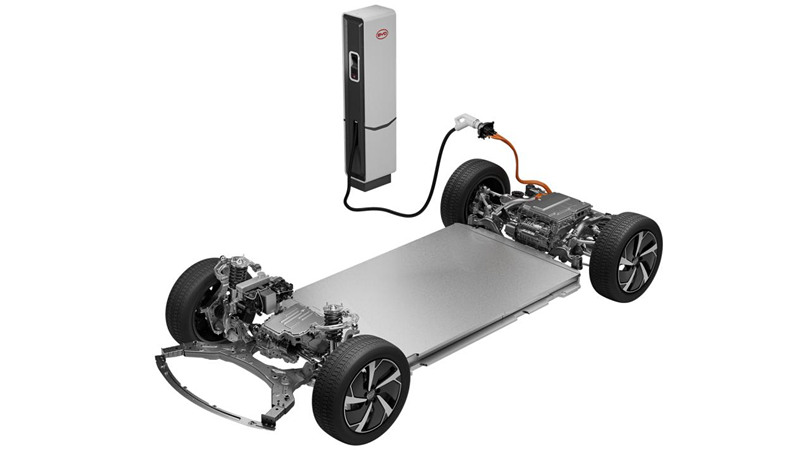
When it comes to pure electric vehicles, we have to mention BYD's e-platform. After 14 years of iterative upgrades, BYD has evolved from the original e-platform 1.0 to e-platform 3.0 and launched best-selling pure electric models such as Dolphin and Yuan PLUS on this platform. Recently, BYD has launched the upgraded e-platform 3.0 Evo to face the highly competitive pure electric market. So as the leader of new energy vehicles in China today, what is the level of BYD's pure electric technology?
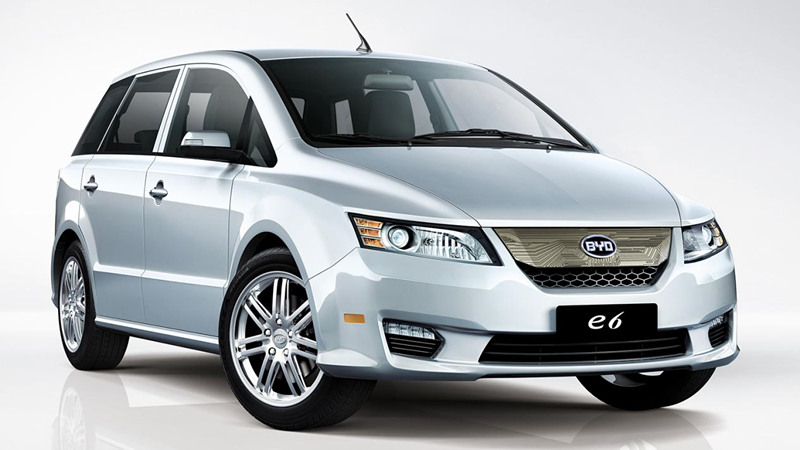
The first thing to note is that unlike the concept of platforms such as Volkswagen's MQB, BYD's e-platform does not refer to a modular chassis, but a general term for BYD's battery, motor, and electronic control technology. The first model to adopt the e-platform 1.0 concept was the BYD e6 launched in 2011. However, at that time, electric vehicles around the world were in their infancy, not only were they ridiculously expensive, but also people were very worried about the durability of electric vehicles. Therefore, the electric vehicles at that time were targeted at the taxi and bus markets, and they were extremely dependent on government subsidies.
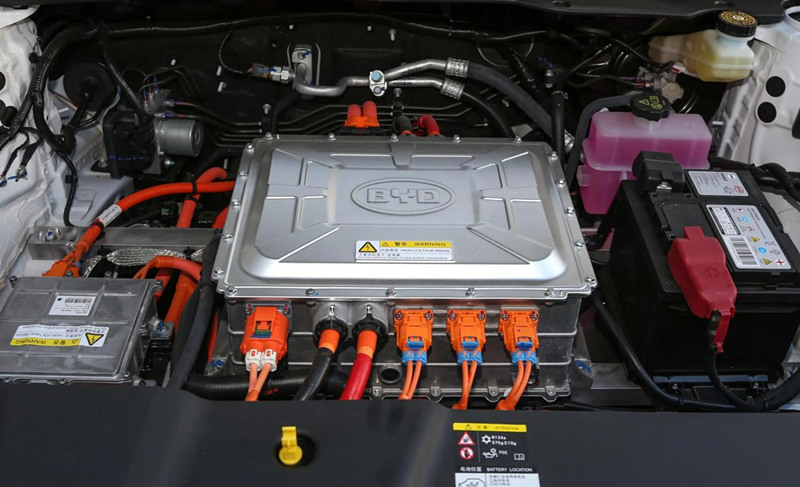
It can be said that the birth of e-platform 1.0 is to meet the high-intensity and large total mileage requirements of commercial vehicles. The problem facing BYD is how to improve the service life of the battery. As we all know, the battery has two lifetimes: [cycle] and [calendar]. The former is that the battery capacity decreases accordingly with the increase of the number of charges and discharges; while the calendar life is that the battery capacity naturally decreases over time. Based on the e-platform 1.0 model, its calendar life has been reduced to 80% of the battery capacity in 10 years, and the cycle life is 1 million kilometers, which not only meets the needs of commercial vehicles but also establishes a good reputation for BYD.

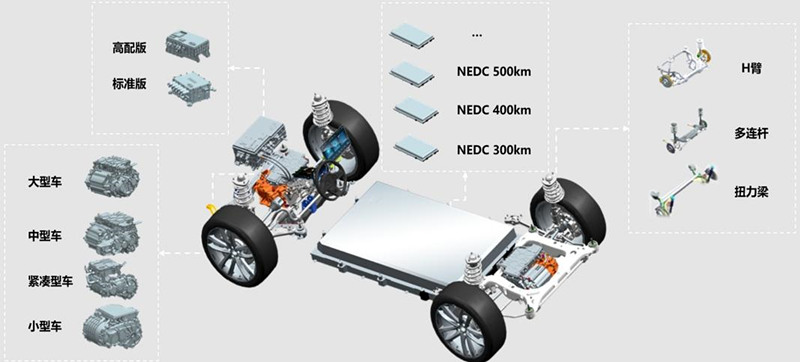
With the gradual growth of China's electric vehicle industry, the cost of batteries and other components has been decreasing year by year, and the policy has been guiding the popularization of electric vehicles to the household market, so BYD launched e-platform 2.0 in 2018. Since e-platform 2.0 is mainly for the household car market, users are very sensitive to the cost of purchasing a car, so the core of e-platform 2.0 is to control costs. Under this demand, e-platform 2.0 began to adopt the integrated design of a three-in-one electric drive, charging and distribution unit, and other components, and launched a modular design for different models, which reduced the cost of the whole vehicle.
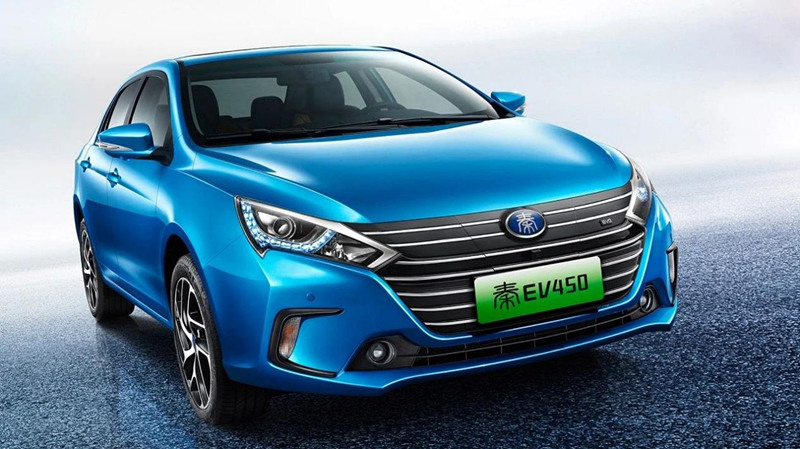
The first model based on e-platform 2.0 was the Qin EV450 launched in 2018, and then the Song EV500, Tang EV600, and early Han EV models were born on the platform. It is worth mentioning that the cumulative sales of e-platform 2.0 models also reached 1 million, enabling BYD to successfully get rid of its dependence on pure electric taxis and buses.


In 2021, with the intensification of the internal volume of the domestic new energy market, an electric vehicle must not only be competitive in price, but also make achievements in safety, three-power efficiency, battery life, and even handling. Therefore, BYD launched the e-platform 3.0. Compared with the previous generation technology, BYD applied a more integrated 8-in-1 electric drive system, which further reduced the weight, volume, and cost of the electric drive system, while technologies such as blade batteries, heat pump systems, and CTB bodies effectively improved the battery life, driving experience, and safety of electric vehicles.
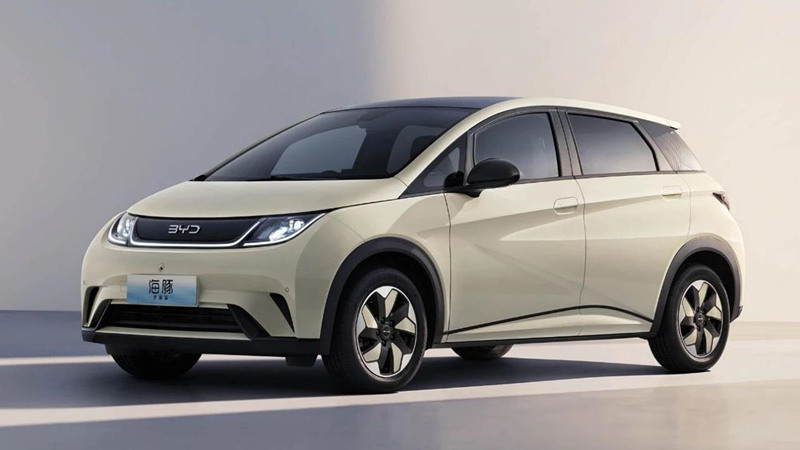
In terms of market feedback, e-platform 3.0 also lived up to expectations. The Dolphin, Seagull, Yuan PLUS, and other models built on this platform have not only become the sales pillar of BYD but also exported many overseas markets. Through continuous upgrading of the pure electric vehicle platform, BYD's electric vehicles have reached a very excellent level in terms of price, performance, and energy consumption, and have been recognized by the market.

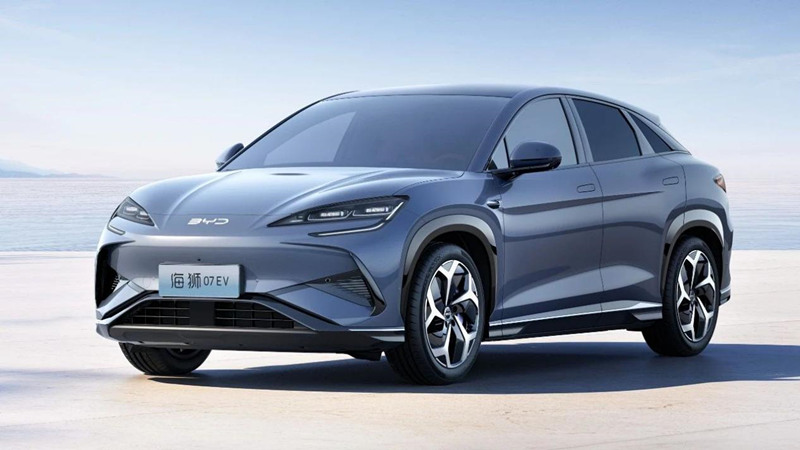
With the influx of traditional manufacturers and more new car manufacturers into the electric vehicle track, there will be blockbuster electric vehicles launched in China every few months, and various technical indicators are constantly being refreshed. In this environment, BYD naturally feels pressure. To continue to lead in the pure electric track, BYD officially released the e-platform 3.0 Evo on May 10 this year, and first applied it to the Sea Lion 07EV. Unlike previous platforms, the e-platform 3.0 Evo is a pure electric vehicle platform developed for the global market, with significant improvements in safety, energy consumption, charging speed, and power performance.

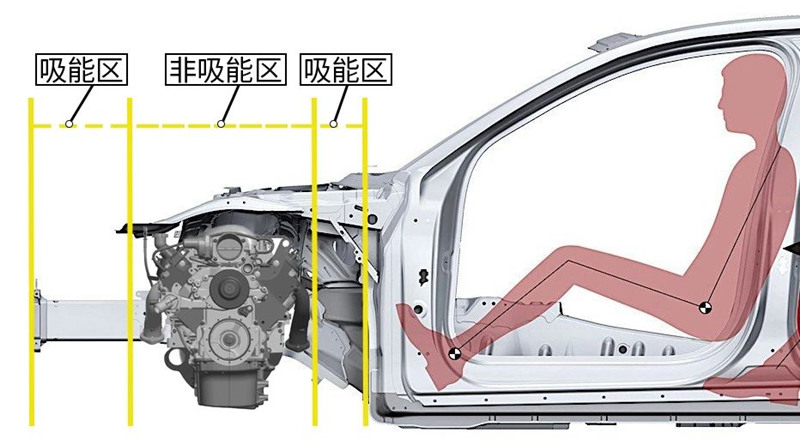
When it comes to car body crash safety, the first thing that comes to mind may be material strength, structural design, etc. In addition to these, collision safety is also related to the length of the front of the car. In short, the longer the energy absorption zone of the front of the car, the better the protection for passengers. However, on front-drive models, due to the large size and high strength of the power system, the area where the power system is located belongs to the non-energy absorption zone, so as a whole, the distance between the front energy absorption zone is reduced.
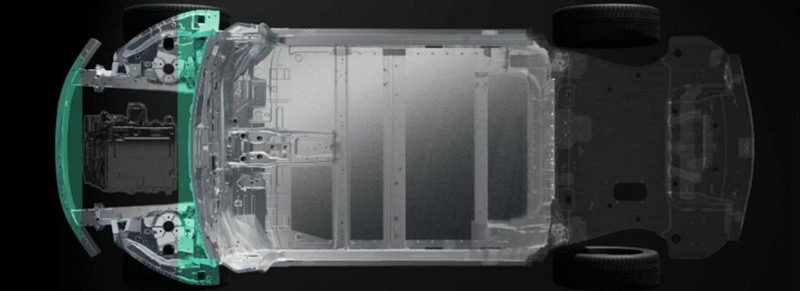

Up: Front Front Drive/Down: Rear Rear Drive
The difference between the e-platform 3.0 Evo is that it focuses on the rear-drive, that is, moving the power train that originally belonged to the non-energy-absorbing zone to the rear axle, so there is more space in the front of the car to arrange the energy-absorbing zone, thus improving the safety of frontal collisions. Of course, the e-platform 3.0 Evo also has a four-wheel drive version equipped with front and rear dual motors, but the power and volume of the four-wheel drive version of the front motor are relatively small, which has little impact on the energy-absorbing zone of the front of the car.
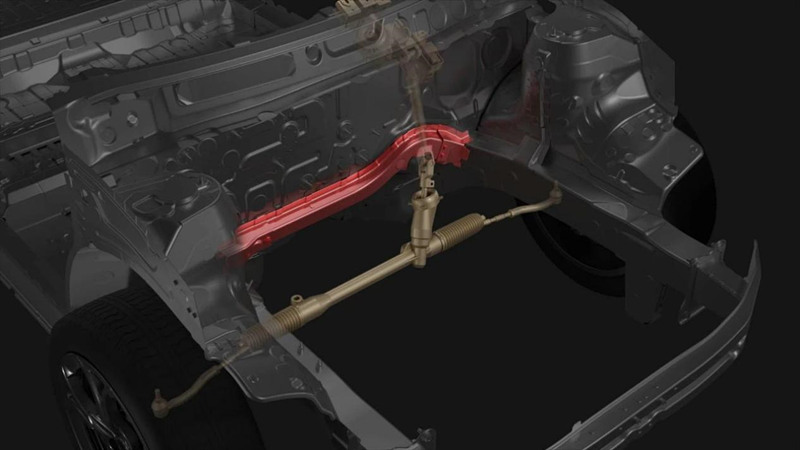
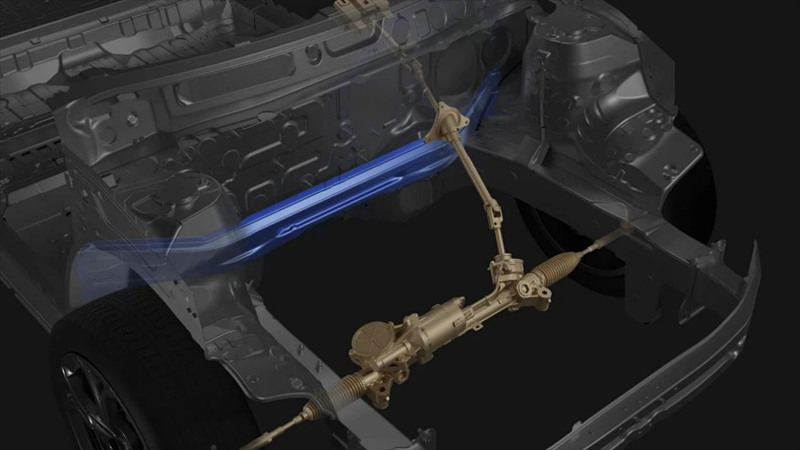
Up: Rear Steering/Down: Front Steering
In terms of the steering gear arrangement, the e-platform 3.0 Evo adopts front steering, that is, the steering gear is arranged on the front side of the front wheel, while on the previous e-platform 3.0, the steering gear of most models except the SEAL is arranged on the rear side of the front wheel. The reason for this design is mainly because in a rear-steering vehicle, the steering string interferes with the lower beam of the front hoarder (commonly known as the firewall), and the beam has to be punched or bent at the position of the steering string, which results in uneven force transmission from the beam. With the front steering design, the steering string does not interfere with the beam, the beam structure is stronger, and the force transmission on both sides of the body is more uniform.
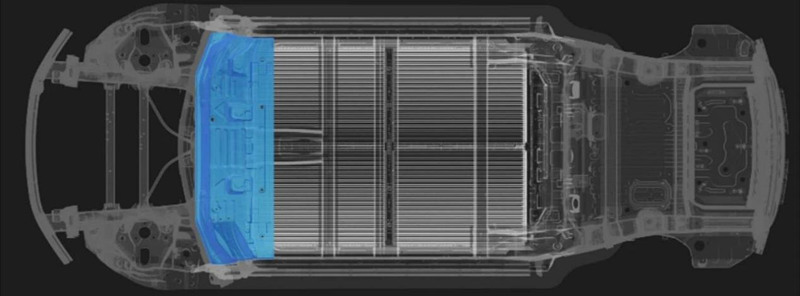
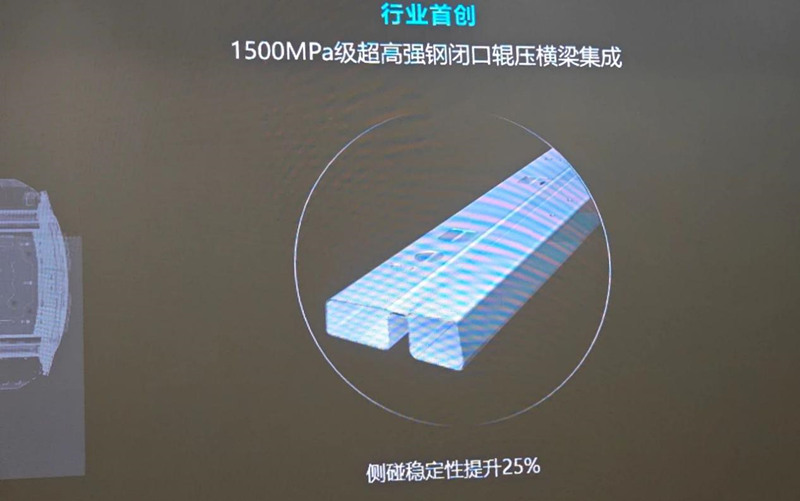
Finally, the new platform still uses CTB body battery integration technology, the double beam in the middle of the chassis adopts a closed structure, and the steel strength of the beam reaches 1500MPa. In ordinary side collisions, or response to side column collisions of E-NCAP, passengers in the cabin and the batteries under the chassis can be better protected. Thanks to technologies such as rear drive, front steering, integrated front hoardings, and CTB, the e-platform 3.0 Evo model's average deceleration in the C-NCAP frontal crash test was reduced to 25g, while the industry average was 31g. The smaller the g value, the better the energy absorption effect of the vehicle. In terms of occupant compartment intrusion, the 3.0 Evo model's pedal intrusion is less than 5mm, which is also an excellent level.

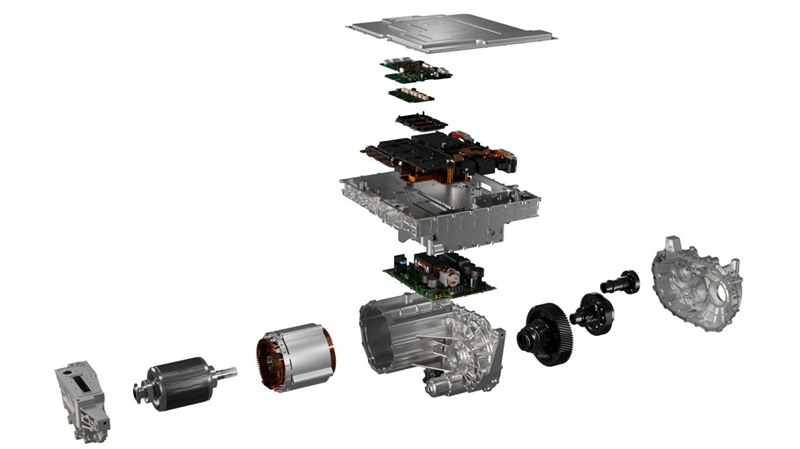
In terms of energy consumption control, the e-platform 3.0 Evo's idea is to use a more integrated electric drive system. For electric vehicles, the higher the integration of the general system, the fewer connecting pipes and wiring harnesses between the various components, and the smaller the volume and weight of the system, which is conducive to reducing the cost and energy consumption of the entire vehicle.
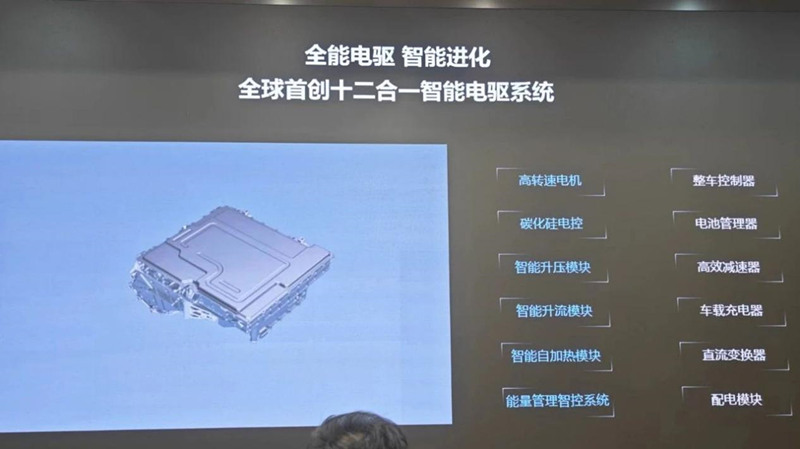
On the e-platform 2.0, BYD launched a 3-in-1 electric drive system for the first time, and 3.0 was upgraded to 8-in-1. Today's 3.0 Evo uses a 12-in-1 design, making it the most integrated electric drive system in the industry.
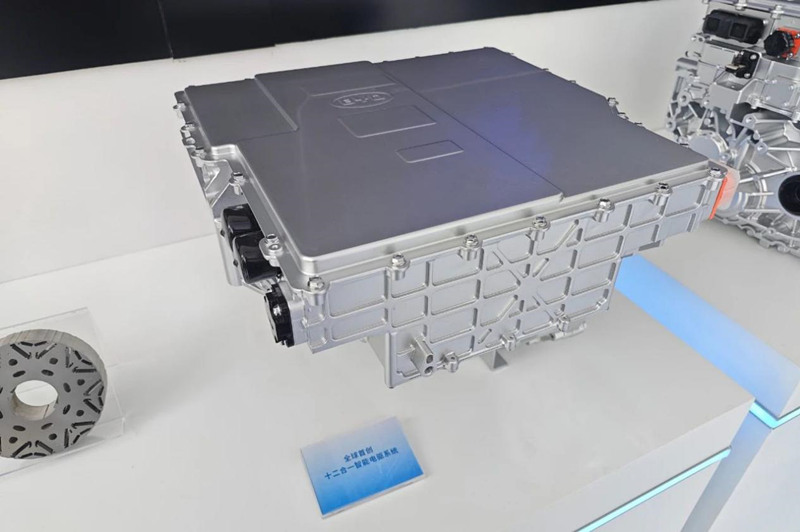
In terms of motor technology, the e-platform 3.0 Evo uses a 23000rpm permanent magnet motor and has been installed on the Sea Lion 07EV, which is the highest level of mass-produced motors at this stage. The advantage of high speed is that the motor can make itself smaller under the premise of constant power, thus improving the "power density" of the motor, which is also conducive to reducing the energy consumption of electric vehicles.
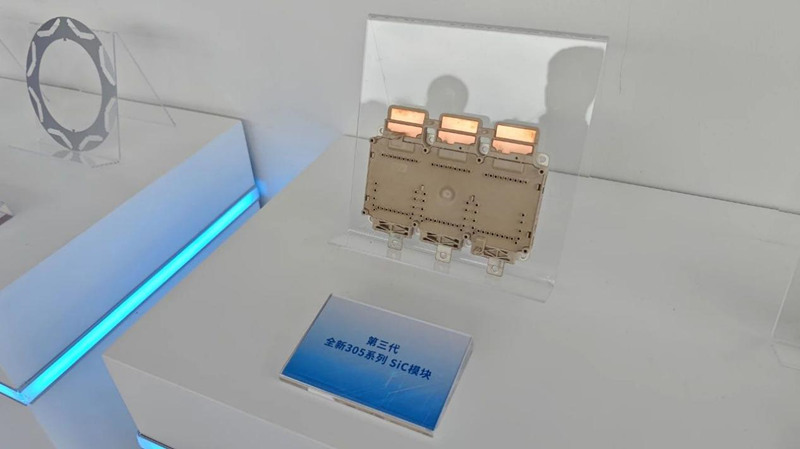
In terms of electronic control design, as early as 2020, BYD Han EV adopted SiC silicon carbide power devices, making it the first domestic manufacturer to conquer this technology. Today's e-platform 3.0 Evo has fully popularized BYD's third-generation SiC silicon carbide power device.
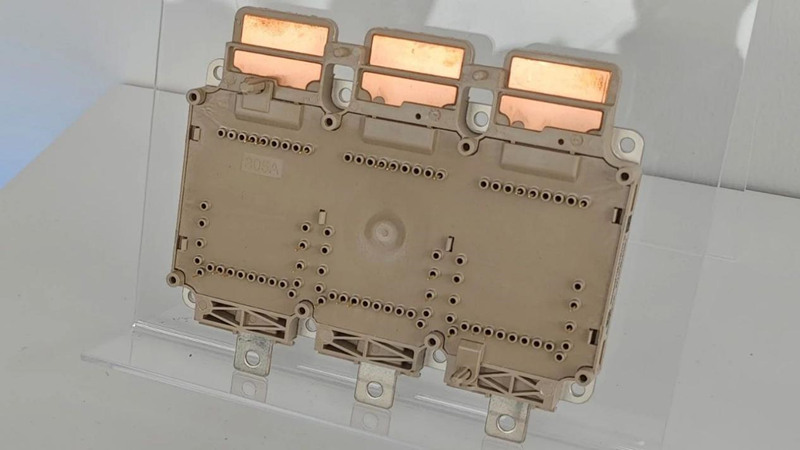
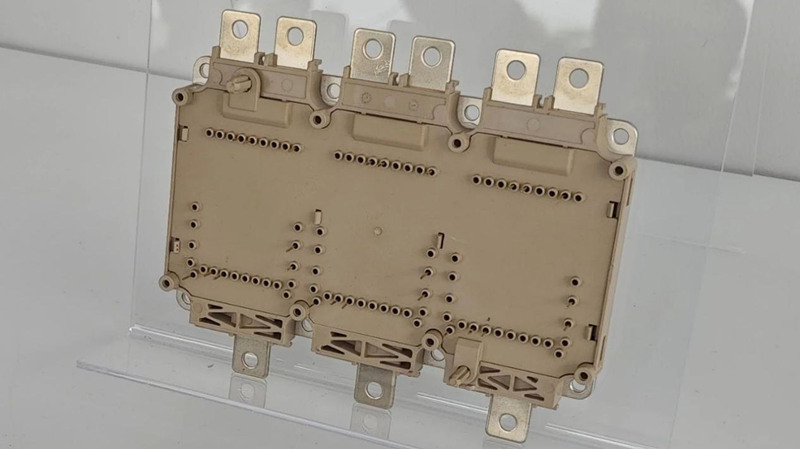
Top: Laminated Laser Welding/Bottom: Pure Bolted Connection
Compared with the existing technology, the third-generation SiC carbide has a maximum operating voltage of 1200V, and the laminated laser welding packaging process has been adopted for the first time. Compared with the previous pure bolting process, the parasitic inductance of laminated laser welding is reduced, thus reducing its own power consumption.
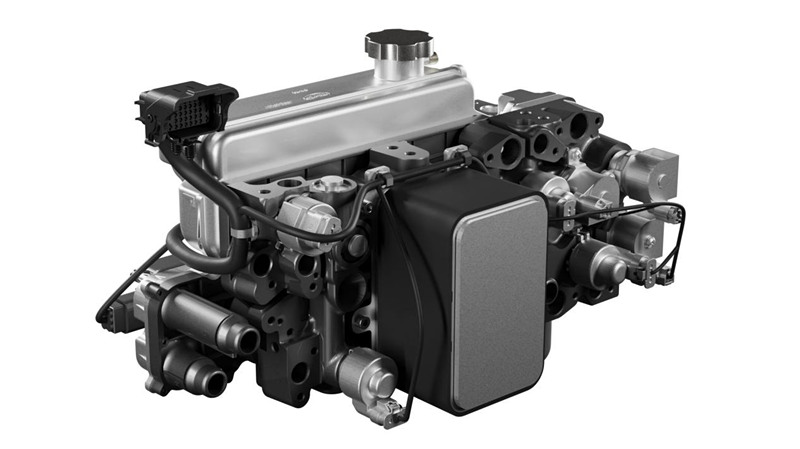
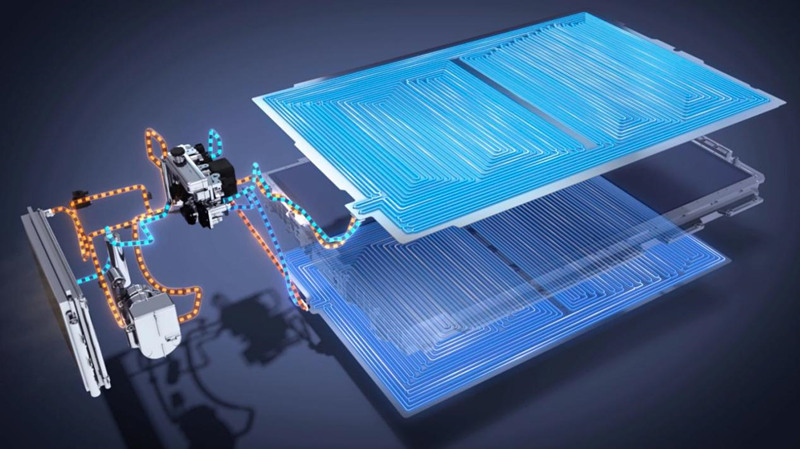
Based on the original e-platform 3.0 heat pump system + refrigerant direct cooling, the new platform has made more optimization of battery heat dissipation. For example, the original cold plate that dissipates heat to the battery has no partition, and the refrigerant flows directly from the front end of the battery to the rear of the battery, so the temperature of the front of the battery is lower, while the temperature of the battery located at the rear is higher, and the heat dissipation is not uniform.
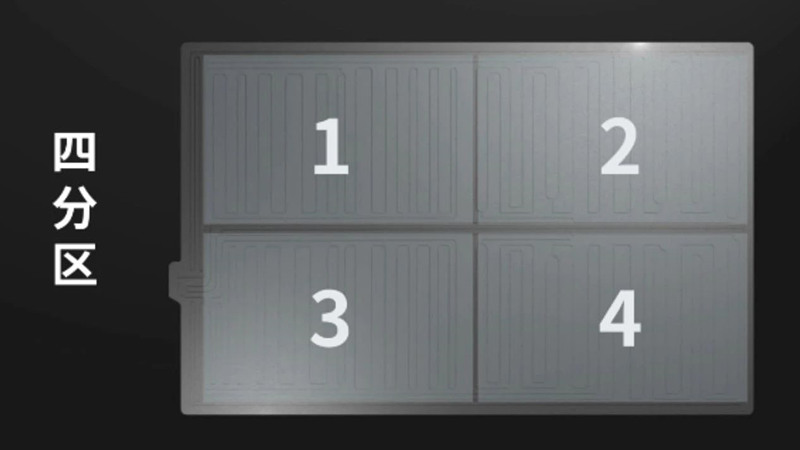
3.0 Evo divides the battery cold plate into four separate areas, each of which can be cooled and heated as needed, resulting in a more uniform battery temperature. Thanks to the upgrades in motor, electronic control, and thermal management, the efficiency of the vehicle in urban conditions at medium and low speeds has been increased by 7%, and the cruising range has been increased by 50km.


Today, the charging speed of electric vehicles is still a pain point for many users. How to catch up with fuel vehicles at the speed of replenishment is an urgent problem for major electric vehicle manufacturers to solve. Especially in the north, because the conductivity of battery electrolytes decreases rapidly in low-temperature environments, the charging speed and cruising range of electric vehicles will be greatly reduced in winter. How to quickly and efficiently heat the battery to the right temperature becomes the key.

On the e-platform 3.0 Evo, the battery heating system has three heat sources: heat pump air conditioner, drive motor, and battery itself. Heat pump air conditioners are familiar to everyone, and there are many applications in air energy water heaters and dryers, so I won't go into details here.
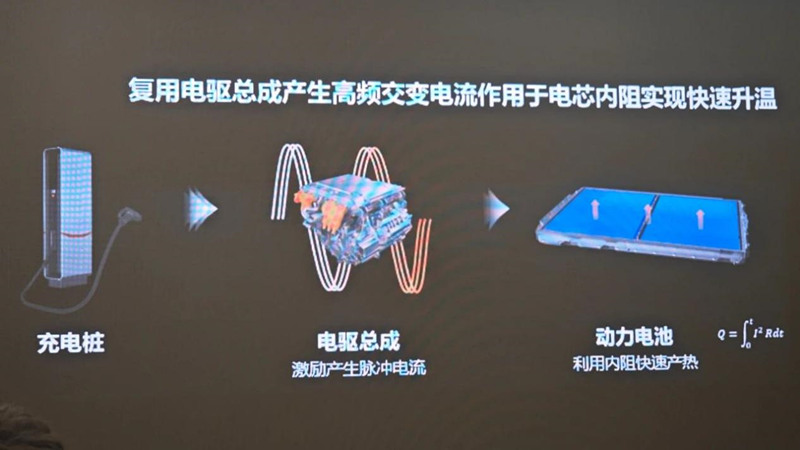
The motor heating that everyone is more interested in is the use of the resistance of the motor winding to generate heat, and then the residual heat in the motor is sent to the battery through the 16-in-1 thermal management module.
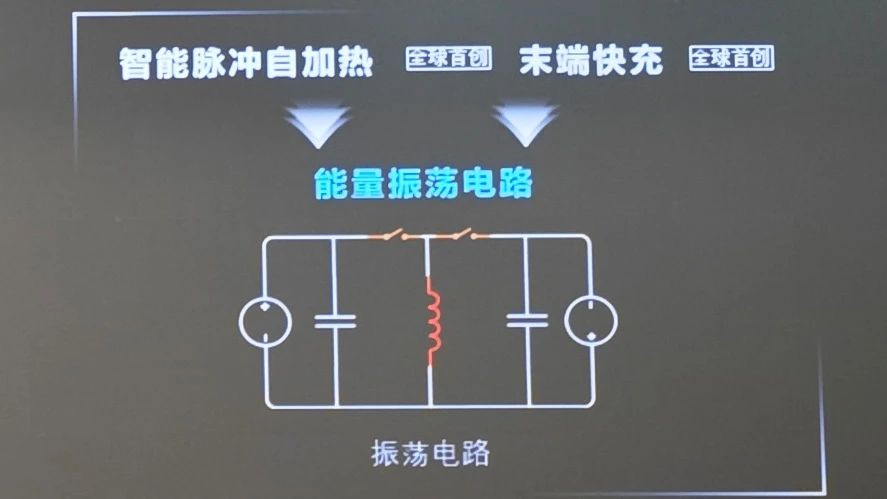
As for the battery heat generation technology, it is the battery pulse heating on the Denza N7. To put it simply, the battery itself has a high internal resistance at low temperatures, and the battery will inevitably generate heat when current passes through. If the battery pack is divided into two groups, A and B, use group A to discharge and then charge group B, and then group B discharges in turn to charge group A. Then through the shallow charging of the two groups of batteries at a high frequency with each other, the battery can heat up quickly and evenly. With the help of three heat sources, the winter cruising range and charging speed of the e-platform 3.0 Evo model will be better, and it can be used normally in extremely cold environments of minus -35 ° C.
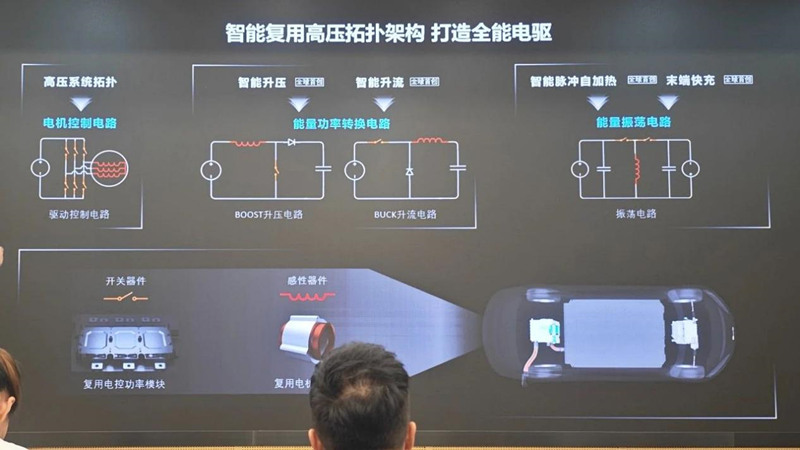
In terms of room temperature charging speed, the e-platform 3.0 Evo is also equipped with an onboard boost/boost function. The role of boost is familiar to everyone, but BYD's boost may be somewhat different from other models. The models built on the e-platform 3.0 Evo do not have a separate onboard boost unit but use the motor and electronic control to make a boost system.
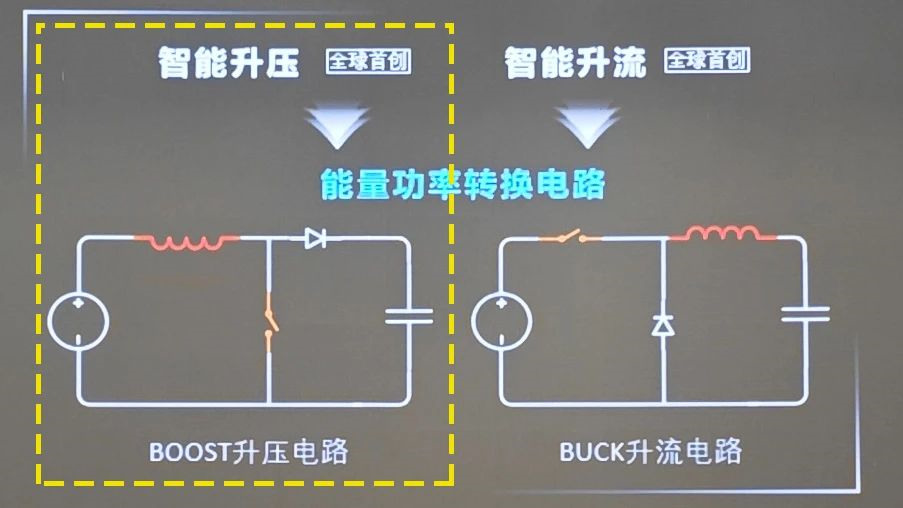
As early as 2020, BYD applied this technology to Han EVs. Its boosting principle is not complicated. In simple terms, the winding of the motor itself is an inductor, and the inductor is characterized by being able to store electrical energy, and the Sic power device itself is also a switch. Therefore, by using the motor winding as an inductor, SiC as a switch, and then adding a capacitor, a boosting circuit can be designed. After the voltage of the general charging pile is increased through this boosting circuit, the high-voltage electric vehicle can be compatible with the low-voltage charging pile.
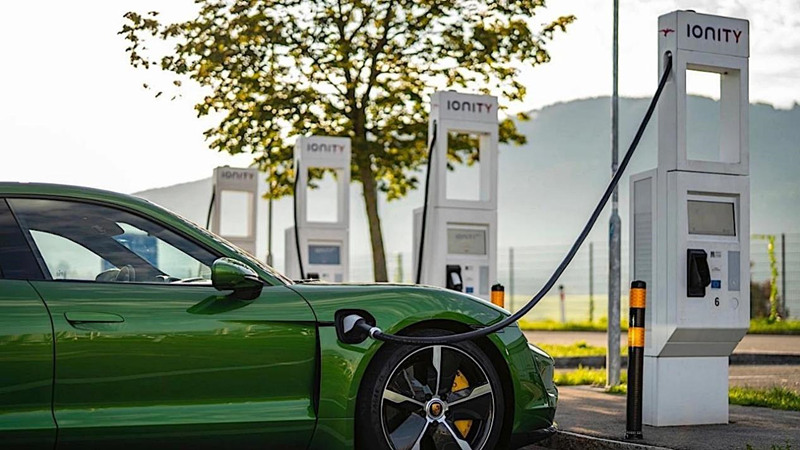
In addition, the new platform has also developed a vehicle-mounted current-up technology. Seeing this, many people may want to ask, what is the use of the vehicle-mounted current-up function? We all know that the current maximum voltage of the public charging pile is 750V, while the maximum charging current stipulated by the national standard is 250A. According to the principle of electric power = voltage x current, the theoretical maximum charging power of the public charging pile is 187kW, and the practical application is 180kW.
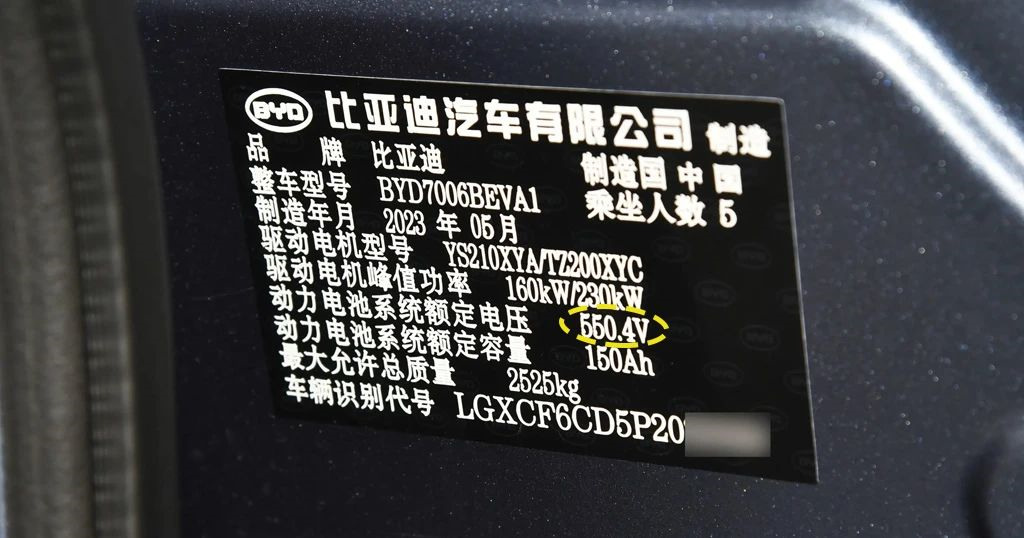
However, since the battery rating of many electric vehicles is less than 750V, or even just over 400-500V, their charging voltage does not need to be so high at all, so even if the current can be pulled to 250A during charging, the peak charging power will not reach 180kW. That is to say, many electric vehicles have not yet completely squeezed the charging power of public charging stations.

So BYD thought of a solution. Since the charging voltage of a general electric vehicle does not need to be 750V, and the maximum charging current of the charging pile is limited to 250A, it is better to make a step-down and current-up circuit on the car. Assuming that the charging voltage of the battery is 500V and the voltage of the charging pile is 750V, then the circuit on the car side can step down the extra 250V and convert it into current, so that the charging current is theoretically increased to 360A, and the peak charging power is still 180kW.
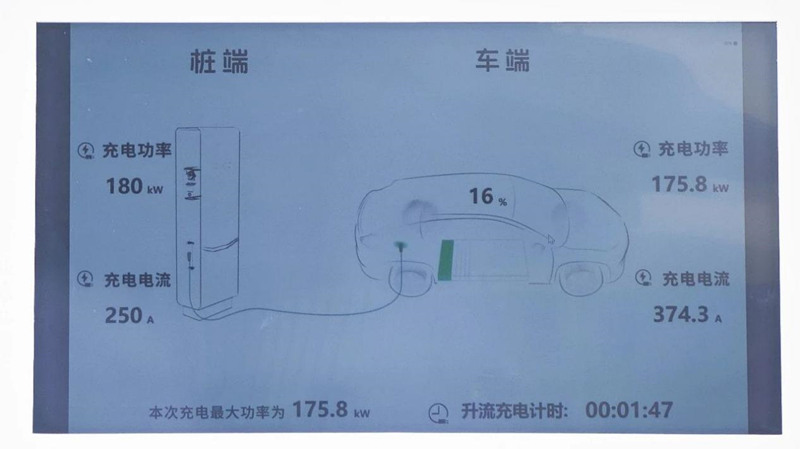
We observed the process of up-current charging at the BYD Hexagonal Building. The Sea Lion 07EV is built on the e-platform 3.0 Evo, although its battery-rated voltage is 537.6V because it uses vehicle-mounted up current technology, the charging current of the 07EV can be 374.3A on the standard 750V and 250A charging pile, and the charging power reaches 175.8kW, basically draining the limit output power of the charging pile at 180kW.
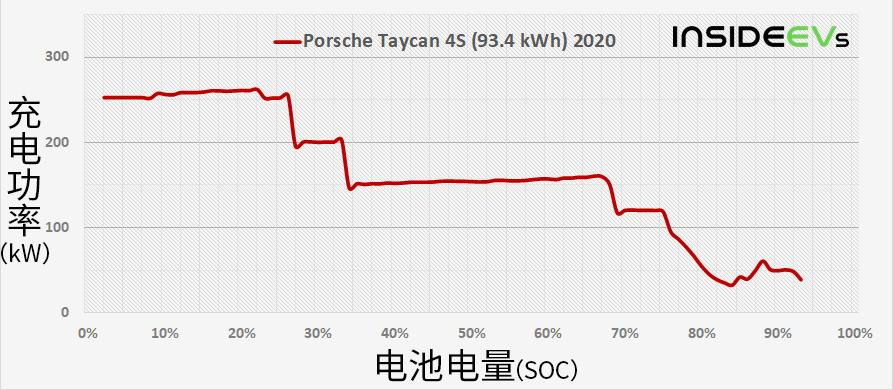
In addition to boosting and current, the e-platform 3.0 Evo also has a pioneering technology, which is terminal pulse charging. As we all know, most of the fast charging promoted by electric vehicles today is in the range of 10-80%. If you want to fully charge from 80%, the consumption time will be significantly longer.
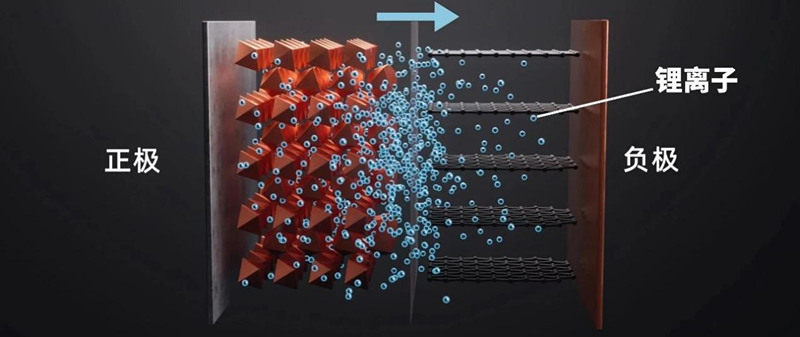
Why can the last 20% of the battery charge only at a very slow speed? Let's take a look at the charging situation at low power. First, lithium ions will escape from the positive electrode, enter the electrolyte, pass through the middle membrane, and then smoothly embed into the negative electrode. This is a normal fast charging process.
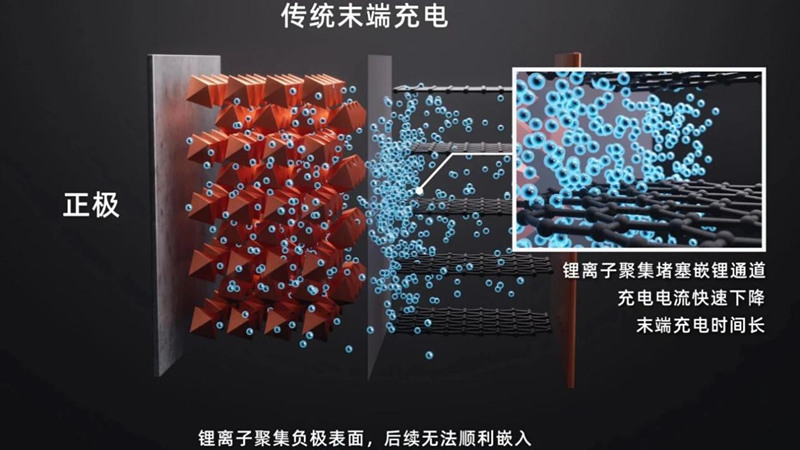
However, when the lithium battery is charged to a high level, lithium ions will block the surface of the negative electrode, making it difficult to embed in the negative electrode. If the charging power continues to increase, lithium ions will accumulate on the surface of the negative electrode, forming lithium crystals over time, which may pierce the battery separator and cause a short circuit inside the battery.
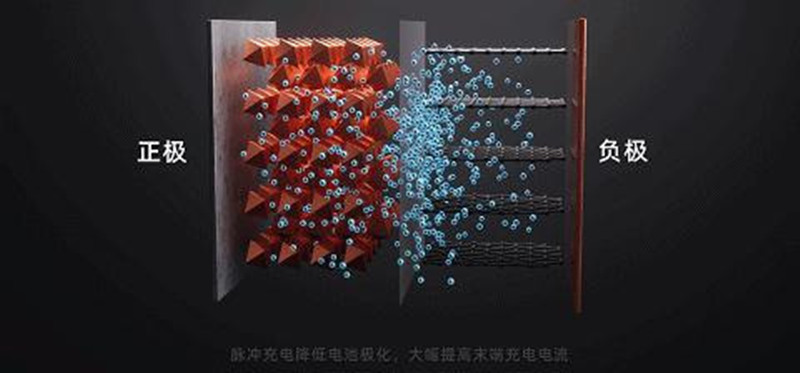
So how did BYD solve this problem? In simple terms, when the lithium ions are blocked on the surface of the negative electrode, the system does not continue to charge but releases a little power to let the lithium ions leave the surface of the negative electrode. After the blockage is relieved, more lithium ions are embedded in the negative electrode to complete the final charging process. By constantly discharging less and more, the charging speed of the last 20% of the battery becomes faster. On the Sea Lion 07EV, the charging time of 80-100% of the power is only 18 minutes, which is a significant improvement compared to previous electric vehicles.

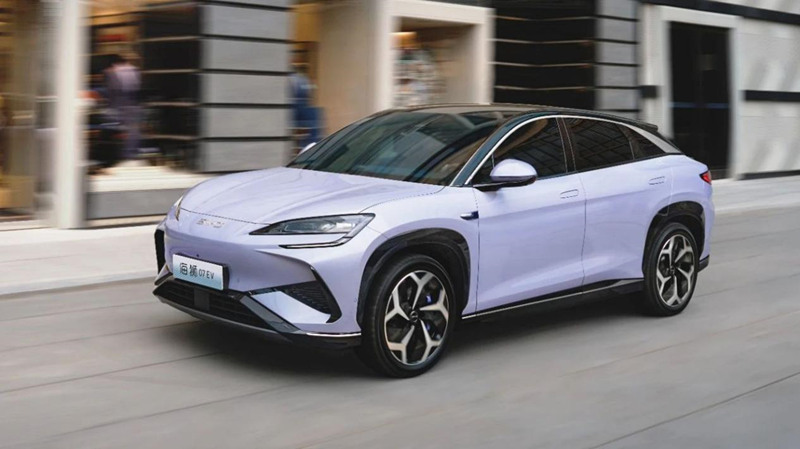
Although the BYD e-platform has only been launched for 14 years, since the 1.0 era, BYD has emerged and taken the lead in completing the research and development and mass production of electric vehicles. In the 2.0 era, BYD electric vehicles have been one step ahead in terms of cost and performance, and some designs have shown advanced thinking, such as the on-board drive system boost technology on Han EV, which has now been adopted by peers. In the 3.0 era, BYD electric vehicles are hexagonal warriors, with no shortcomings in terms of battery life, energy consumption, charging speed, and price. As for the latest e-platform 3.0 Evo, the design concept is still ahead of its time. The on-board current-up and pulse charging technologies are all industry-first. These technologies will surely be emulated by their peers in the future and become the technical vane of electric vehicles.
--------------------------------------------------------------------------------------------------------------------------------------------------------------------------------------------------------------------------------------------------------------------------------------------



